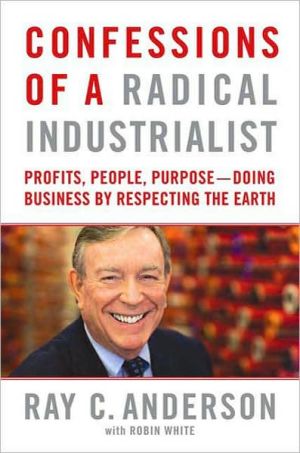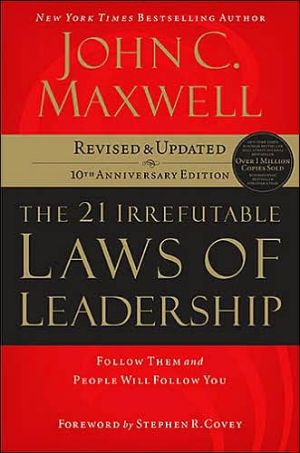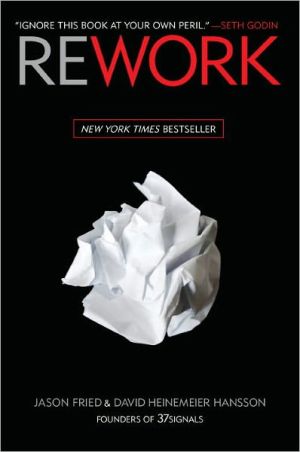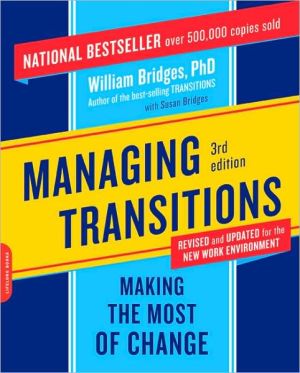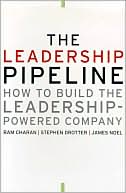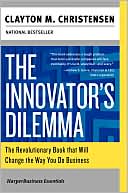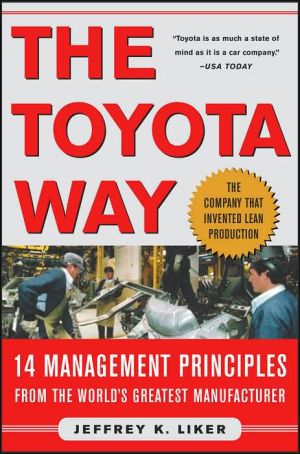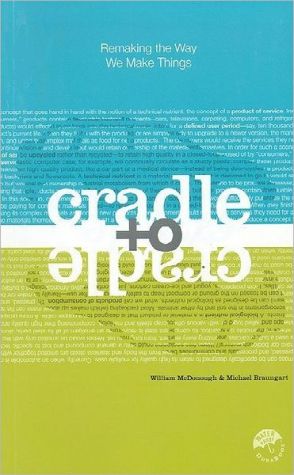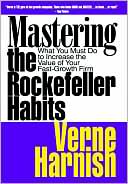Confessions of a Radical Industrialist: Profits, People, Purpose--Doing Business by Respecting the Earth
In 1994, Interface founder and chairman Ray Anderson set an audacious goal for his commercial carpet company: to take nothing from the earth that can’t be replaced by the earth. Now, in the most inspiring business book of our time, Anderson leads the way forward and challenges all of industry to share that goal. \ \ The Interface story is a compelling one: In 1994, making carpets was a toxic, petroleum-based process, releasing immense amounts of air and water...
Search in google:
In 1994, Interface founder and chairman Ray Anderson set an audacious goal for his commercial carpet company: to take nothing from the earth that can’t be replaced by the earth. Now, in the most inspiring business book of our time, Anderson leads the way forward and challenges all of industry to share that goal.The Interface story is a compelling one: In 1994, making carpets was a toxic, petroleum-based process, releasing immense amounts of air and water pollution and creating tons of waste. Fifteen years after Anderson’s “spear in the chest” revelation, Interface has:-Cut greenhouse gas emissions by 82%-Cut fossil fuel consumption by 60%-Cut waste by 66%-Cut water use by 75%-Invented and patented new machines, materials, and manufacturing processes-Increased sales by 66%, doubled earnings, and raised profit marginsWith practical ideas and measurable outcomes that every business can use, Anderson shows that profit and sustainability are not mutually exclusive; businesses can improve their bottom lines and do right by the earth. Publishers Weekly In 1994, after reading Paul Hawken's The Ecology of Commerce, carpet mogul Anderson decided to make his carpet company Interface, established in 1973, the first company to achieve 100 percent sustainability, a massively successful effort that has made him a sought-after business consultant (clients include Walmart) as well as an environmental hero. Sustainability, argues Anderson, makes just as much business sense as it does a liberal crusade, and he even makes absorbing reading out of the process that transformed his operations. Interface developed processes for recycling old carpets, invented a leased carpet program (too much ahead of its time, admits Anderson), utilized the work of indigenous peoples, switched over to solar and other alternative energy sources, reduced water use and contamination, and, in 2007, even managed to achieve negative net greenhouse gas emissions. What is even more impressive is that Interface achieved this globally-not just in the U. S.-while growing profits. Unfortunately, Anderson is far less compelling when he turns his focus from Interface to leadership strategies, stumbling through the banalities of corporate spirituality and the Golden Rule. Still, the story of Anderson's commitment to green practices and the wild success he achieved is fascinating, instructive, and very timely. Copyright © Reed Business Information, a division of Reed Elsevier Inc. All rights reserved.
Prologue\ This is a book about the future of business and industry, a future driven by a new and powerful idea: sustainability. Specifically, it deals with what it takes to run a profitable, modern business with the environment in mind, doing no harm to the earth and taking from the earth nothing that cannot be renewed naturally and rapidly by the earth. It is about a new business model that can generate not just bigger profits, but better, more legitimate ones, too.\ But as I sit here today, October 10, 2008, writing while I vacation in the ancient town of Brugge, Belgium, a global financial meltdown seems to be under way; putting into question whether the economic system can survive.\ Here’s a snapshot at this moment in time. While it’s 7:05 p.m. in Belgium, it is 1:05 p.m. in Atlanta, where I live. The Dow Jones Industrial Average is down 345 points, following seven consecutive days of decline. It appears to be moving toward 8,000, or lower. The Federal Trade Commission has just approved Wells Fargo’s acquisition of Wachovia for $11.7 billion.\ Venerable Merrill Lynch is in the process of disappearing into Bank of America, a route Countrywide Financial has already taken. Lehman Brothers, a longtime pillar of stability in the investment banking world, has failed; with only its brokerage and mutual fund businesses surviving under the banners of Barclays of the United Kingdom and Neuberger Investment Management, respectively. Fannie Mae and Freddie Mac have gone into federal government “conservatorship.” Washington Mutual, the largest savings bank in the United States, is being gobbled up by JPMorgan Chase, out of the receivership of the Federal Deposit Insurance Corporation (FDIC).\ Bear Stearns, the first really big shoe to fall, is already being absorbed by JPMorgan Chase in a deal brokered by the U.S. Treasury Department over a weekend. Goldman Sachs and Morgan Stanley, for so long dominant forces in the investment banking world, have opted to change their very nature and become regulated commercial banks. They were the last of the mega–investment banks once Bear Stearns, Merrill Lynch, and Lehman Brothers were gone. Mitsubishi UFJ, a Japanese bank, is taking a $9 billion equity position in Morgan Stanley to shore up MS’s capital structure and prepare it for the role of acquirer in the turmoil ahead, portending more consolidation to come. American International Group (AIG), said to be too big to be allowed to fail, is being propped up by the Federal Reserve to the tune of more than $100 billion.\ And the U.S. Treasury Department is trying to determine just how to “invest” $700 billion of taxpayers’ money to jump- start the “clogged up” (Secretary of the Treasury Henry Paulson’s term) American credit markets.\ Clogged up means banks have stopped making loans, even among themselves, and credit is drying up, even for borrowers with impeccable credit standing. Meanwhile, Europe an central banks are undertaking their own forms of rescue with capital infusions of more than a trillion dollars.\ A year ago the Dow Jones Industrial Average was above 14,000. The Dow is an important number on Wall Street. It is an important number on Main Street, too. Wealth worth trillions of dollars has evaporated, taking with it the savings of millions of people. While the much- touted benefits of a “trickle down” economy have always been hard to document, the trickledown hurt of a freeze in capital, in short- term lending and in mortgages and auto loans is now painfully apparent to just about everyone. I look into my laptop’s screen and see a financial industry in turmoil. It seems as if the financial world we have known for three quarters of a century is changing before my eyes. The underlying culprit is said to be the bursting of the sub prime home loan bubble in the United States, which precipitated a whole new set of consequences: many trillions of dollars lost in arcane derivatives that few people even understand.\ Watching this unfold from afar is truly surreal. Personal, too, as I watch my own investment portfolio shrink. I think that all my holdings are in sound companies, but who really knows? Even those who have the responsibility of running those banks don’t seem to know what to do or where to turn. One wonders who or what is “running” whom.\ However, another kind of sustainability is on my mind. My company, Interface, has become nearly synonymous with corporate environmental sustainability. But can we sustain sustainability, or will the economic storm sweeping over the world force us to put our efforts on the back burner?\ I answer myself: No way! We will continue. You see, while environmental and financial sustainability have often (and mistakenly) been seen as opposite goals, they are, in truth, one and the very same. We have seen that for ourselves. We know it to be absolutely true.\ Oil’s price is down today to less than $80 a barrel, the lowest in a year. Not long ago oil was $147 a barrel and reaching for more. Down $67 a barrel!\ Is that good? Or bad?\ The book that follows this introduction was largely written while the Dow was falling from around 13,000 to around 10,000, oil’s price was rising, and gasoline was topping $4 a gallon in the United States. But concern for the future of the American banking system, and the unprecedented entry of government institutions into the world of private finance— to rescue it, no less— never once entered my mind, though smart people I know and talk with regularly have been saying financial upheaval was coming. Yet, quite intentionally, I was writing about the future, the future of the real economy— the place where real stuff gets made and sold, and real services are rendered. It is quite distinct from the financial economy, with its stock market and its various indexes, altogether a sort of imperfect analogue of the real economy.\ The point of my story is deceptively simple. Business and industry— not just American business and industry, but global business and industry— must change their ways to survive. Some people have been saying this for a long time. Many more are saying it today.\ I make no claim to prescience, only to conviction. And by survive, I do not mean maintain identity and integrity within the context of a financial system in meltdown, either. By survive, I mean business must be steered through a transition from an old and dangerously dysfunctional model to a far better one that will operate in balance and harmony with nature— thrive in a carbon- constrained world, and put down the threats of global climate disruption, species extinction, resource depletion, and environmental degradation.\ In a word, develop a business model that is sustainable. Even as I write this introduction I have not yet settled on a title for the book. But I think it should somehow mention “hubris.” (It probably won’t because it’s not catchy enough.) For there’s nothing quite like staring apocalypse in the eye to humble oneself or a society. To know that nobody has control over events puts the limitation of power into a new perspective.\ Puffed- up hubris is run out of town on a rail by something just as useless: unthinking fear.\ What we need instead of hubris or fear, and what this book offers, is a new and better way forward. And yes, hope, a hope learned from my own, personal experiences running a company that is reaching for sustainability. There is a chance that on the other side of this financial meltdown a new sanity will overtake the world of business, industry, and finance, and its analogue, the stock market. Then this book can assume relevance for newly opened minds and become a map for change.\ Therefore, I am altering as few of the words already written as possible, though it is tempting to rewrite some passages that are predicated on high prices for oil. But I take the view that the upheavals in finance will be followed by slowing business and declining demand, therefore falling oil prices— for a while. Then this too will pass away, but the fundamentals of supply and demand will still be there. So I let stand unchanged those passages, in the conviction that their relevance will become clear on the next leg up of the real economy.\ The story you will read has grown out of real- life experiences— mine and those of the people of my company, Interface, Inc. We’re not some small, boutique manufacturer of green widgets. We make and sell carpet tiles— more than a billion dollars’ worth in the most recent year. We also make broadloom carpets— about a hundred million dollars’ worth in a year.\ Our sales force covers the world, selling our products in 110 or more countries in any given year.\ Almost all our products are made for commercial and institutional interiors. A relatively small but growing portion is made for home use. Interior designers and architects are extremely important to us. It is their choices of our products for their projects that keep the wheels turning in our factories in six countries on four continents— with more to be built in time, always close to their markets, not for cheap labor, but for sensitivity to customer needs and to shorten transportation pipelines.\ We are a company that is highly dependent for our raw materials on petrochemical products produced by big chemical companies. We use a lot of energy, too. All of it used to come from burning fossil fuels. Not so anymore.\ But I get ahead of myself.\ In 1998, I published Mid- Course Correction, an autobiographical account of my formative years and some forty- two years (at that point) in the business world. The last twenty- five of those years had been invested in the founding of my company, its growth and development and its survival. But the last four of those twenty- five years were the primary focus of Mid- Course Correction.\ Those were the four years that followed my 1994 epiphanal reading of Paul Hawken’s The Ecology of Commerce (HarperCollins, 1993), four years that had seen the literal “mid- course correction” of Interface away from the extractive, abusive path of business as usual and toward a renewable, cyclical, and benign business model— a model of sustainability. The plan for executing our course correction— a wide- ranging and astonishingly successful program we now call Mission Zero— was the heart of Mid- Course Correction.\ Ten years have passed since Mid- Course Correction’s publication. A lot has happened at Interface during those ten years, but Mission Zero is still the plan. Given the progress we have made in executing it, I thought it was not only time for an update but for a how- to manual to more clearly show others the way.\ For the reader who has not read Mid- Course Correction, I have rewritten its essential story, so you need not feel something important is missing from this account. For the reader who has read Mid- Course Correction, you may read some passages that seem familiar, but they are expressed more expansively here. I hope not to bore anyone with repetition. As with Mid- Course Correction, I make no effort to prove anything. This is not an academic book. It is a real life story of real people doing real, if extraordinary, things.\ Today, as many CEOs are wondering how they will weather the financial storm, the step- by- step plan that we crafted at Interface assumes greater importance than I imagined when I set out to formulate it. As you read this book, you will see that the choices— the trade- offs—we are told we must make between financial success and environmental success, between doing well and doing good, are just plain false.\ I began by saying that this is a book about the future of business and industry; I should say the necessary future of business and industry, if we are to choose the survival option and lead humankind away from the environmental abyss toward which we are rushing headlong. Conversely, if the institutions of business and industry fail in their own mid- course correction toward ecological survival, the financial meltdown I am observing from Brugge will seem like a tea party by comparison.\ That is a very large burden for the institutions of business and industry to bear. This book is about lightening that burden. It offers a template for a better, more benign business model. It also makes the business case for sustainability in pure business terms.\ If you have better ideas, I hope you will share them with me; for as long as I live, I will be looking for a better way. That’s what sent me and my company on a quest to achieve the very sustainability that some really knowledgeable people said was just plain impossible.\ Of course, many of those same people were the ones who brought us Sub prime mortgages, overleveraged hedge funds, and credit default swaps, and a traditional framework of financial “values” that appears to be collapsing before our eyes.\ Meanwhile, the value of nature’s ser vices to all of humanity— clean air, fresh water, arable land, pollination, seed dispersal, and climate regulation, just to name a few— has not lost a cent. They are, they will be, and always were the real gold standard. Investing to conserve and protect them has been a winner for us. As you read this book, I think you will see that investing in the earth’s future— the earth that all business, all life, utterly depends upon— can be a winner for you, too.
AcknowledgmentsPrologue1. Mission Zero2. The Power of One Good Question3. One Small Digression and Six Lessons4. Mountain Climbing5. Zero Waste: The First Face of Mount Sustainability6. Smokestacks and Other Relics7. Plugging into the Sun8. Round and Round They Go9. Getting Out of the Breakdown Lane10. The Circle of Infl uence, or Love on the Factory Floor11. The Final Ascent12. On Leadership, Programs, and Policies13. Science and Skeptics14. Awakening the Mind and the Spirit15. The Next Ascent16. Every Reason for HopeEpilogue: Off the Grid in Lost Valley, North CarolinaAppendix A: LCA Comparison of Two Carpet Tile—Backing TypesAppendix B: Master Evergreen Lease and Services AgreementAppendix C: The Interface ModelIndex
\ From the Publisher"Highly inspirational...Essential reading for anyone, whether lay, student, or practitioner, interested in business success today and in the environment."—Library Journal \ "Fascinating, instructive, and very timely."—Publishers Weekly\ "Ray Anderson with his team has transformed Interface, Inc. in one of the best cases of sustainability. All employees led by him were committed with the 'climb of Sustainability Mountain', as he says, and believed the challenge was possible. Throughout the book, Anderson reinforces that the concept 'I have financial success or I have environmental success' is not true and I truly believe in it. Besides all the skepticism, he shows us that everybody, from the CEO to the homeowners, can be part of this movement of building a new society. This is the main role of this book: to prove this is possible!" - Fabio Barbosa, President, Grupo Santander Brasil\ "Ray Anderson is a personal inspiration for me and for anyone trying to find their way in this new world of green business. He may be ‘radical’ but he’s also a profit-seeking businessman. Confessions tells an amazing first-hand story of a personal and business transformation, a journey from being a cold-eyed capitalist to being…a cold-eyed capitalist, but just with a much larger perspective on what profitable really means. Ray has found a new path that’s good for the planet and great for his business. He’s showing the world how it’s done yet again." - Andrew Winston, environmental strategist, author of Green Recovery and co-author of Green to Gold“If we had a lot more businessmen like Ray Anderson, the planet would be neither bankrupt or overheated. He is a hero, and this book makes clear why!” - Bill McKibben, author of Deep Economy\ “We are in desperate need of hope in this world, but if hope is to be credible and trustworthy, it has to walk a straight line to reality. No one does this better than Ray Anderson.” - Paul Hawken, author of Ecology of Commerce, Natural Capitalism, and Blessed Unrest\ “Anyone who thinks that business leadership on environmental sustainability is an oxymoron must read Confessions of a Radical Industrialist. In a humble, inspiring and informative manner, Ray Anderson describes his own journey to not just tweak the edges of his business towards green goals but to fundamentally re-think and re-design every aspect of its operations to respect environmental limits.\ My only hesitation is that we cannot clone Ray Anderson…or perhaps we can? Let’s hope that Confessions of a Radical Industrialist becomes required reading in all business, industrial design, and economics classes so that our next generation of business leaders continue in the direction that Anderson has begun.” - Annie Leonard, author of The Story of Stuff\ "Ray put everything he has built at his company on the line for what he believed and created a model of profitable sustainability and humanity. This tale of how and why is a great story of a good man. We sure do need more radical industrialists ." - Jonathan Lash, President of World Resources Institute\ \ \ \ \ \ Publishers WeeklyIn 1994, after reading Paul Hawken's The Ecology of Commerce, carpet mogul Anderson decided to make his carpet company Interface, established in 1973, the first company to achieve 100 percent sustainability, a massively successful effort that has made him a sought-after business consultant (clients include Walmart) as well as an environmental hero. Sustainability, argues Anderson, makes just as much business sense as it does a liberal crusade, and he even makes absorbing reading out of the process that transformed his operations. Interface developed processes for recycling old carpets, invented a leased carpet program (too much ahead of its time, admits Anderson), utilized the work of indigenous peoples, switched over to solar and other alternative energy sources, reduced water use and contamination, and, in 2007, even managed to achieve negative net greenhouse gas emissions. What is even more impressive is that Interface achieved this globally-not just in the U. S.-while growing profits. Unfortunately, Anderson is far less compelling when he turns his focus from Interface to leadership strategies, stumbling through the banalities of corporate spirituality and the Golden Rule. Still, the story of Anderson's commitment to green practices and the wild success he achieved is fascinating, instructive, and very timely. \ Copyright © Reed Business Information, a division of Reed Elsevier Inc. All rights reserved.\ \ \ Library JournalAnderson, called by Time magazine "a hero of the environment," transformed his carpet-manufacturing company, Interface, to 100 percent sustainability. Now he offers a highly inspirational book, showing how, starting in 1994, he steered his company "on a new course—one designed to reduce our environmental footprint while increasing our profits." His own inspiration came from Paul Hawken's The Ecology of Commerce: A Declaration of Sustainability. Anderson's company cut greenhouse gas emissions by 82 percent, eight of ten Interface plants have achieved the 100 percent renewable energy mark, and the company uses 100 percent recycled yarn for carpets. While implementing these green initiatives, the company increased sales by 66 percent, doubled earnings, and raised profit margin. Crucially, Anderson describes the organizational and managerial steps that he took to achieve these goals. VERDICT Essential reading for anyone, whether lay, student, or practitioner, interested in business success today and in the environment.\ \
